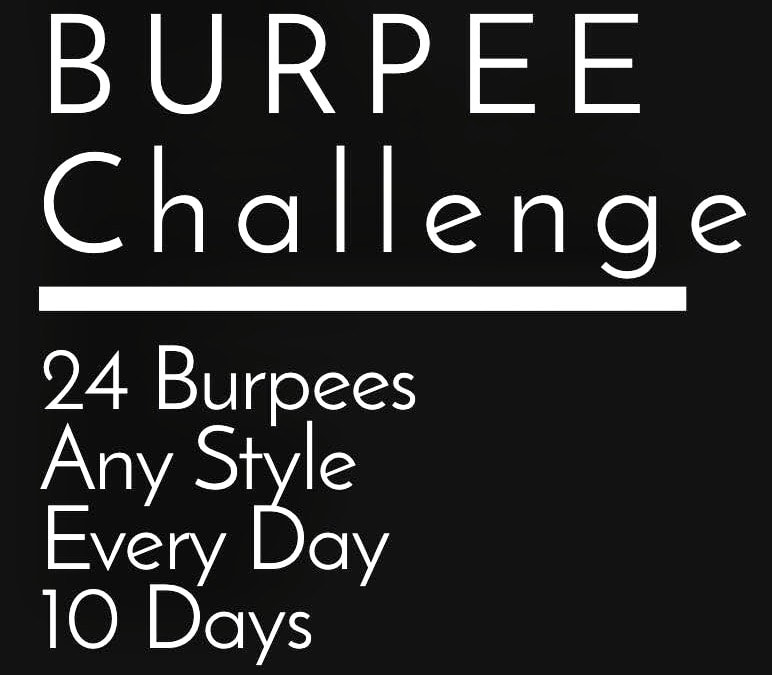|
The answer is yes and no. If someone challenges you to a fist fight, is that a good or bad thing? The answer would depend greatly on how you view violence and the reason(s) the other person wants to fight you. If you chose to fight, would you be ready?
You don't have to scour the internet to find fitness challenges. Challenges are everywhere. Here are 3 things you should consider if you do start a challenge.
Is it good for me? Painful movement can and does happen. Are you using exercise to "get in shape?" The best results from exercise are when the person is already "in shape." If pain is the end result of exercise, either the exercise is too difficult or you are doing it wrong. Stiffness and soreness are not the same as pain. Pain, by definition, is when you are avoiding normal motion - aka compensating to complete the motion. Can it be sustained? If programs like K900000-Z were the right answer for the masses, then we would all be doing it. Sometimes small challenges are great at getting you from point A to B. There is definitely a time and place for intense or slow paced exercise programming. If you had to stop your program because of injury, then it is not sustainable. We do not all fit in the same box, and cookie-cutter approaches tend to injure too many people. What happens when it's over? If you get to the end injury and pain free, what do you do? On to the next challenge? Have you ever had the meh feeling at the end of a long journey? Movement has been replaced by exercise and fitness. If you believe that exercise is what makes you fit, then buckle up - you are very likely to discover injuries that you have never had before. People don't become fit just by accident. Yes genetics helps, but the most fit people in the world don't necessarily go to the gym, or even do "challenges." Fitness is continuous nutritious healthy movement.
1 Comment
I just saw a post about:
HOW MANY SETS AND REPS? There is exactly 1 time when this question is 100% appropriate to even ask - DO YOU HAVE PAIN WHILE MOVING. The answer needs to be NO. If the answer is YES: 1. Figure out how you BECAME injured. 2. Figure out how to GET OUT of pain. 3. Figure out how to STAY OUT of pain. 4. Do I BREATHE with integrity? If the answer is NO: 1. What are my MOVEMENT GOALS? 2. What activities do I need to do to REACH my goals? 3. Do I breathe with INTEGRITY? Reps and sets are for STRENGTH AND CONDITIONING. Do you need a MOVEMENT program, or S&C program? If you don't know the difference, the answer is probably MOVEMENT. FYI, you can combine both. #FMS #SFMA #MOVEMENTMATTERS Interesting day. I treated one of my professional athletes. In years past, I would have used "x" technique. At the end of the day, it doesn't really matter what you do as long as it works. I came to a quick conclusion, that their first problem was - super inefficient breath, too much inflammation in one upper leg. I tested the foot strength on the inflamed side pre and post edema removal. After edema removal, foot strength was dead even.
I sent my athlete home with 3 exercises, all based from simple breathing.
I have absolutely no idea how fast he will get better at breathing. I just know that he will be in a higher risk category for injury if he doesn't learn to control his breath. In my early years as a massage therapist, I knew there had to be a better way to do hands on treatments to make the pain go away and stay away. I was right, but had no idea what it was, where I could learn it, because I had no idea what "it" was even called. Here is the basic "secrets" to living without pain. Learn to: 1. Breathe. 2. Move correctly. 3. Breath while you do stuff. 4. Do not move into or through pain. 5. If you already have pain, you probably aren't doing 1-3. Be Safe out there. In May 2014, the National Highway Traffic Safety Administration (NHTSA) said U.S. motor vehicle crashes in 2010 cost almost $1 trillion in loss of productivity and loss of life. An estimated 2.31 million people were injured in motor vehicle crashes in 2013 (5,564 people per day or one every 14 seconds).
This is a list of the most common injury types and side effects treated with soft tissue modalities:
A very common mistake people make is to simply not do anything. While the body is trying to heal, it can hide pain from you. Many people have pain “they didn’t even know was there”. This pain is related to how your body is compensating for the injured areas. Your pain is very real and can be difficult to fully understand when you have never been in an accident before. Soft Tissue Therapies can help:
It is recommend for the first two weeks following your accident to record your daily pain findings. Your daily pain may change and you may not be able to remember two months later while talking to the insurance company's medical adjuster the exact details of your accident. People who wait longer than a month are less likely to have medical treatments paid for by their auto policy. There is no magic formula to tell if you are injured or not after an accident, which is why immediately going to your MD or seeking care from a Chiropractor, Acupuncturist, Physical Therapist, or Massage therapist can be so critical. Minnesota is a "no-fault" state, which means that it does not matter who was at fault in any car accident. The PIP (personal injury protection) portion of your auto policy will cover a maximum of $20,000 per accident. If you are injured please seek treatment. Whomever you choose to see for treatment, ask as many questions as you need to help you feel comfortable and understand the process you are going through. Be safe out there. When was the last time you had a headache? What did you do about it? Did you just think it would go away? Maybe you just thought it would get better and go away if you waited long enough. Pain is real, and it does exist. There are lots of people who will tell you about their pain, even, when you didn’t want to know.
For as long as people have been around, there have been people helping other people chase pain away. Centuries ago, pain-chasers were called things like, medicine man, holy man, shaman, or healer. Within the last 50 years we have begun to have new names for these people. Now we call them, doctor, chiropractor, acupuncturist, massage therapist, physical therapist, occupational therapist. Now, there are so many different names for pain chasers, and they all have their own “technique(s)” for chasing your pain away. The sun and moon chase each other day after day. This is a cycle that will continue for an eternity, and that’s ok. Actively chasing pain has become a normal part of some people’s lives. Pain is a normal thing to have, because it is our alert system that tells us internally that a problem is happening. Problems happen when people are not able to keep the pain away. Lets get back to headaches. When you figured out you had one, what did you do? Lots of people take pills from the local pharmacy, others don’t. So does that mean headaches are a deficiency in pain medication? With a variety of pain-chasers to choose from, how do you pick one? I would not suggest seeing a general practice physician if you had heart problems – you would see a cardiologist. One general issue people regularly face is the active advice/ prescription. Are they giving you good or bad advice? Many people follow the advice because they other person is supposed to know more. They are supposed to have the answer you are looking for. Why would these people want to give bad advice? If they know more than you do, isn’t that a good enough reason to listen and do what they say? There may come a point when you will follow their advice not knowing if it truly is the best advice you can take, because it’s their job to know. This advice may only be the best they can offer, based on their training and experience. When you decide not to follow their advice, the circumstance is still the same. Are they offering you advice because they do not see any other way to help you, or will they only help you if you follow their advice? I used to chase people’s pain without the concrete knowledge that I might actually eliminate it. Not every technique will work for every single person. I am still in the process of learning new and more advanced techniques. Everyone is different and everyone may need an individualized treatment plan. I choose to treat people with a variety of techniques. People heal differently, so recovery time can vary. Some people have structural imbalances that require me to think differently. I treat people with autoimmune issues different from people who have tired hands from yard work. Years ago, when I primarily treated muscle pain with trigger point therapy, I found myself being limited by people’s tolerance to pressure. People always came back with the same issues. I eventually figured out that I was not doing enough to help them. So I started learning different techniques because what I was using was not getting the results I thought my clients deserved. I was chasing the sun and moon. Is your practitioner simply chasing pain, or are they actively trying to eliminate the source of that pain? The variety of techniques I use now all have their uses. It is my job to figure out when to intentionally utilize each technique for maximum effectiveness. A pain-chaser will never fully understand why you have the pain, and they are not willing to do what is necessary to help – because they don’t understand why you are even in pain. I chased pain for the better part of a decade. Worst of all, I didn’t even know it. |
AuthorSMatt and Von. Archives
June 2018
Categories |


 RSS Feed
RSS Feed